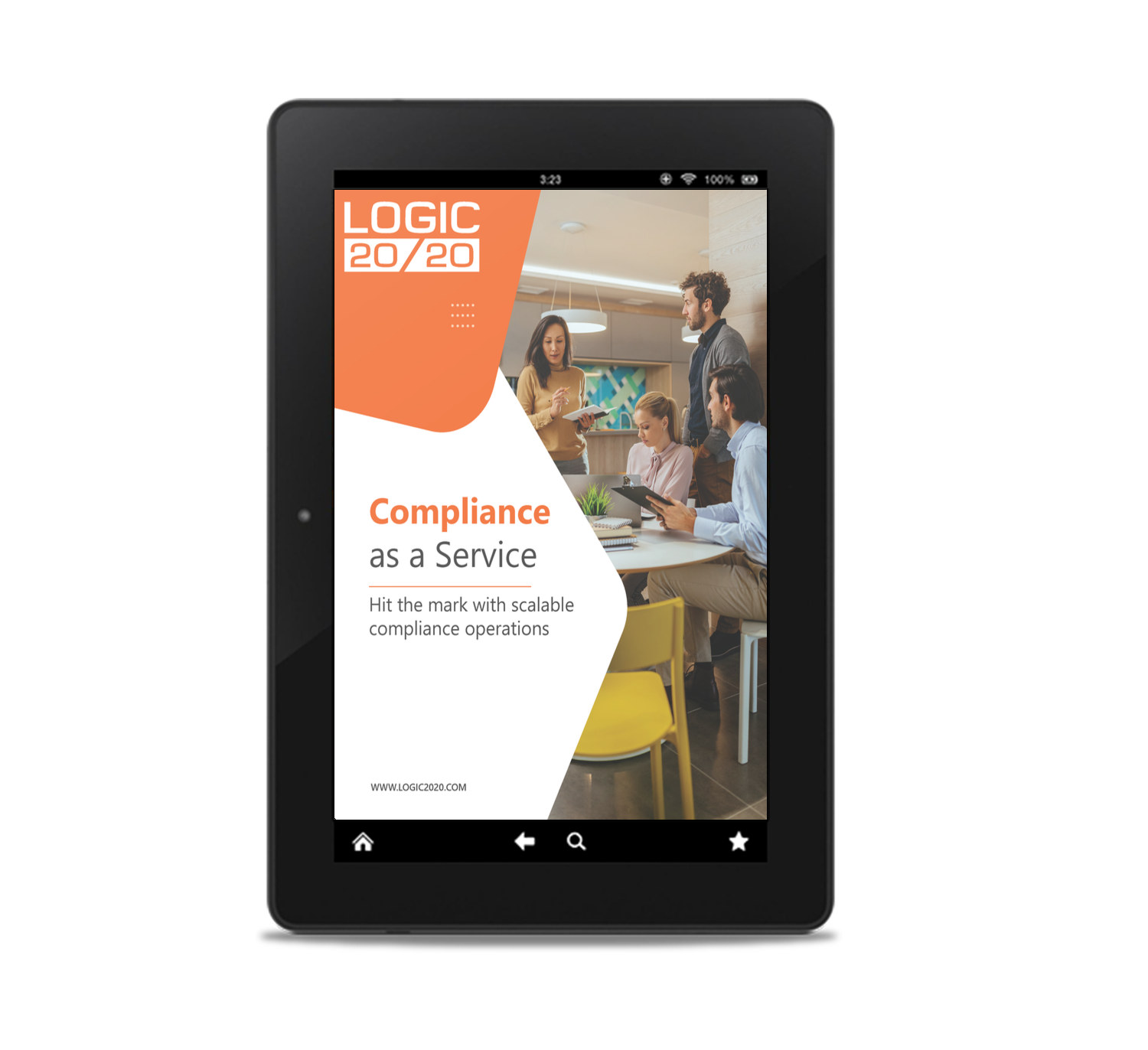5-minute read
Quick summary: Learn how a regulation-agnostic framework enables businesses to navigate complex and evolving compliance landscapes with flexibility, efficiency, and resilience.
Navigating regulatory compliance is a significant challenge for businesses of all sizes. The ever-evolving landscape of privacy laws, AI regulations, and industry-specific requirements demands a proactive and forward-thinking approach to ensure readiness and operational efficiency. This article offers a guide to adopting a regulation-agnostic framework—a flexible and adaptable compliance strategy designed to meet both national and global requirements while enabling businesses to respond efficiently to changing regulations across regions. Staying ahead of regulatory changes is essential for maintaining resilience and a competitive edge.
Today’s regulatory challenges: An overview
As regulations continue to grow in complexity, businesses face the dual challenge of meeting current requirements while preparing for future changes. Privacy laws like GDPR, CCPA, and CPRA set global data protection standards, while emerging AI regulations and stricter environmental policies raise the bar across industries. To ensure organizational safety and transparency, businesses must understand and adhere to the rules set by regulatory frameworks. Especially in the age of AI, organizations must pay close attention to AI usage and its compliance requirements.
The consequences of non-compliance are more expensive than ever, and businesses must meet these challenges with limited resources, necessitating the operationalization of responses at scale to stay competitive. A reactive approach is costly and unsustainable. Instead, businesses must anticipate regulatory shifts and build frameworks that can accommodate new requirements without disruptive overhauls, safeguarding operations and reducing risks tied to non-compliance.

Compliance as a Service (CaaS) ebook
Get expert insights on how to hit the mark with scalable compliance operations.
We will never sell your data. View our privacy policy here.
What is a regulation-agnostic framework?
A regulation-agnostic framework is grounded in universal principles such as privacy by design, data minimization, and broad compliance practices like risk management and transparency. This approach is adaptable and rooted in a deep understanding of the organization’s data—where it resides, who owns it, and how it flows. It establishes a solid foundation of policies that not only ensure compliance today, but also position the business to align with evolving industry trends, such as AI governance, sustainability measures, and advanced cybersecurity standards. By adopting forward-thinking practices, businesses can stay ahead of emerging regulations, ensuring long-term resilience and operational efficiency while maintaining competitiveness.
Core principles of regulation-agnostic compliance
Forward-thinking policies
A regulation-agnostic framework emphasizes policies that anticipate future trends, not just meet current requirements. For instance, businesses can integrate AI governance practices, like algorithmic auditing and explainability, into their frameworks to prepare for upcoming AI regulations. Similarly, implementing carbon tracking systems proactively addresses potential future environmental laws.
Readiness for new regulatory demands
Compliance frameworks must be scalable and adaptable to accommodate new laws, such as emerging state regulations in the United States or the EU AI Act. By maintaining detailed data maps and understanding data flows, businesses can respond quickly to new reporting requirements or adjust practices to meet new standards.
Operational efficiency through standardization
Standardized processes streamline compliance management, particularly for organizations that span multiple regions. Adopting privacy standards like GDPR as a baseline, even in regions without similar requirements, simplifies efforts across global operations. Likewise, frameworks like ISO/IEC 27001 for cybersecurity and universal ESG metrics for environmental compliance can unify global practices.
Scalability for national and global operations
A regulation-agnostic framework adapts to a company’s footprint. For national businesses, the focus is on regional regulations, with built-in flexibility for future growth. For global enterprises, adopting strict standards like GDPR ensures broad regulatory coverage while simplifying local adaptations.
Key components of a regulatory response readiness framework
A key component of any regulatory response framework is the adoption of standardized policies across regions. This approach creates a consistent compliance strategy globally, simplifying governance and enhancing efficiency. Standardized policies also allow for the flexibility to incorporate new laws as they emerge, ensuring the business stays compliant as the regulatory landscape evolves. While standardized policies are essential, the framework must also accommodate region-specific requirements, such as data breach notification laws. For example, an organization’s incident response plan must include a clear structure for identifying the location of affected data subjects and the specific notification requirements of each jurisdiction.
This approach is beneficial from a customer perspective as well. Adopting strict global standards like GDPR—whether required or not—builds trust with customers, especially in regions with weaker protections. Companies that implement these enhanced privacy measures can use them as a marketing tool, building customer loyalty. According to a recent Pew Research study, 81 percent of Americans are concerned over how companies are using their data.
For example, a global technology company, initially required to offer Data Subject Rights (DSR) protections to customers only in the EU, chose to extend these rights to all customers proactively. When similar protections were later introduced in other countries, the company didn’t have to adjust since they were already in compliance.
Phase 1: Fact gathering
This phase focuses on collecting comprehensive data to understand the current state of compliance. It involves reviewing existing policies, processes, and tools, as well as identifying gaps in regulatory readiness across regions. Key steps include:
- Mapping out organizational data flows to understand where personal data resides, how it is processed, and which teams own it
- Evaluating the regulatory landscape affecting the business
- Engaging stakeholders across legal, IT, operations, and other departments to capture diverse perspectives on compliance strengths and weaknesses
Phase 2: Gap analysis and recommendations
During this phase, businesses analyze the collected data to identify discrepancies between existing practices and regulatory requirements. For example:
- Are policies too narrowly tailored to specific regulations, creating inefficiencies?
- Are processes missing key components, such as breach notification workflows?
- Is there insufficient tracking or reporting of compliance metrics?
Once gaps are identified, organizations can develop tailored recommendations to address them. These may include adopting universal standards like ISO/IEC 27001 for cybersecurity, expanding data governance practices, or implementing tools like OneTrust, BigID or Purview for streamlined compliance management.
Phase 3: Implementation and continuous monitoring
The final phase involves executing on the recommendations and embedding compliance into the organization’s operations. Implementation steps might include updating policies, deploying compliance tools, and conducting employee training. Importantly, this phase doesn’t end with implementation; continuous monitoring ensures the framework remains effective as regulations evolve.
Industry tools to support regulatory readiness
Tools play a vital role in optimizing compliance efforts. For privacy, solutions like OneTrust and BigID streamline data privacy management and automate compliance tasks such as Data Subject Rights requests. These tools ensure compliance with regulations while providing valuable insights for ongoing management. For risk governance, tools like Archer help manage regulatory changes and issue tracking.
Generative AI is emerging as a powerful tool for compliance management, offering the potential to significantly increase efficiency and the depth of tasks like supplier risk assessments. However, it’s important to use these tools responsibly, ensuring that human oversight remains a key part of the process to verify accuracy and maintain compliance integrity.
For smaller companies with limited compliance resources, AI-powered tools can be particularly transformative. These solutions provide a cost-effective way to stay proactive about regulatory obligations without overwhelming internal teams. By automating time-intensive tasks and offering real-time insights, smaller businesses can remain adaptable and compliant, even as regulatory landscapes evolve, all while conserving valuable resources.
Staying informed about regulatory changes and industry trends is essential for maintaining compliance and adapting proactively. Leveraging digital tools and participating in industry associations can help organizations stay updated and interpret new regulations effectively.
Future-proofing compliance for lasting success
Adopting a regulation-agnostic framework is crucial for businesses aiming to stay compliant across both national and global landscapes, today and in the future. By focusing on universal principles and adaptable processes, companies can navigate complex regulatory environments with agility and efficiency. This proactive, future-proof approach ensures businesses are ready for emerging regulations and trends, safeguarding operations, reducing risks, and enabling long-term success. With the right framework in place, businesses can remain resilient and competitive, no matter how the regulatory landscape shifts.
Embedding compliance into corporate culture
Embedding regulatory compliance into corporate culture is essential for companies operating in today’s complex and rapidly changing regulatory environment. It’s not enough to simply have policies on paper—compliance must be woven into the fabric of everyday business practices. This starts with leadership setting the tone, making it clear that meeting regulatory requirements is a shared responsibility across all levels of the organization.
Regular training and clear communication help employees understand both the “why” and the “how” of compliance requirements, empowering them to make informed decisions in their daily work. Encouraging transparency and accountability ensures that employees feel comfortable raising concerns and reporting potential issues, reducing the risk of non-compliance and fostering a culture of trust.
Recognizing and rewarding strong compliance efforts reinforces the importance of these values, motivating employees to prioritize compliance in their roles. Companies should also implement a structured approach to compliance, with well-defined policies, procedures, and internal controls that are regularly reviewed and updated in response to regulatory updates and changing regulations.
By embedding compliance into corporate culture, organizations can strengthen their reputation, build trust with stakeholders, and stay informed about evolving regulations. This proactive approach not only reduces risk but also positions companies to respond quickly and effectively to new regulatory challenges.
Building a compliance team
Building a dedicated compliance team is a critical step for companies aiming to manage regulatory compliance effectively and stay ahead of changing regulations. A strong compliance team brings together professionals with expertise in regulatory requirements, industry standards, and internal processes, ensuring the organization has the knowledge and resources needed to navigate complex regulatory landscapes.
The team’s responsibilities include developing and implementing compliance policies, providing ongoing training and support to employees, and monitoring adherence to regulatory requirements across business units.
For companies operating in multiple countries, it’s essential that the compliance team stays informed about international regulations, such as the EU AI Act, and adapts internal processes accordingly. By fostering collaboration across departments and ensuring access to the latest tools and regulatory insights, compliance teams can help organizations manage risk, support innovation, and maintain a strong compliance posture in the face of evolving regulations.

Streamline compliance with expert guidance
- Compliance managed services
- Compliance process optimization
- Regulatory response readiness
- Compliance automation


